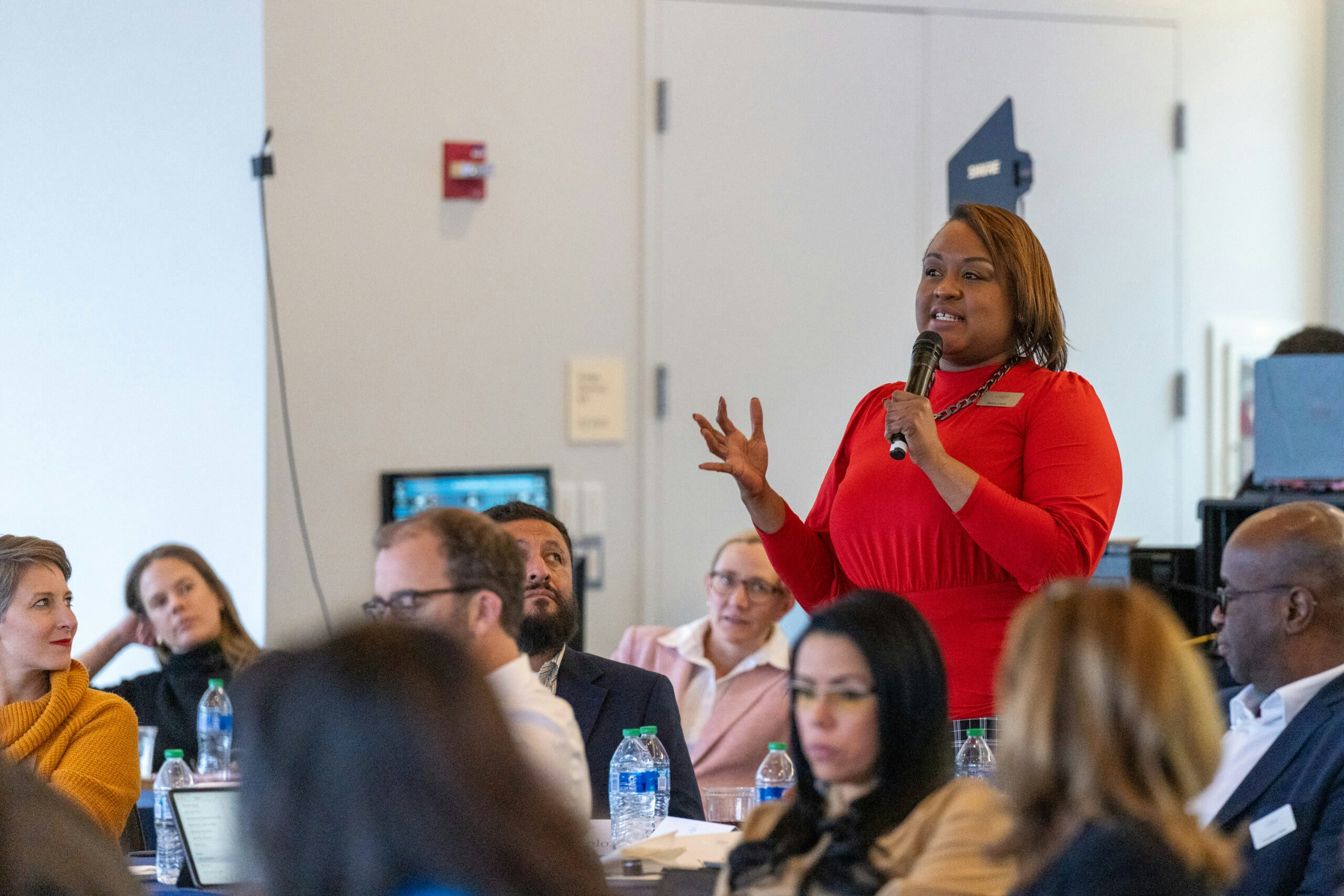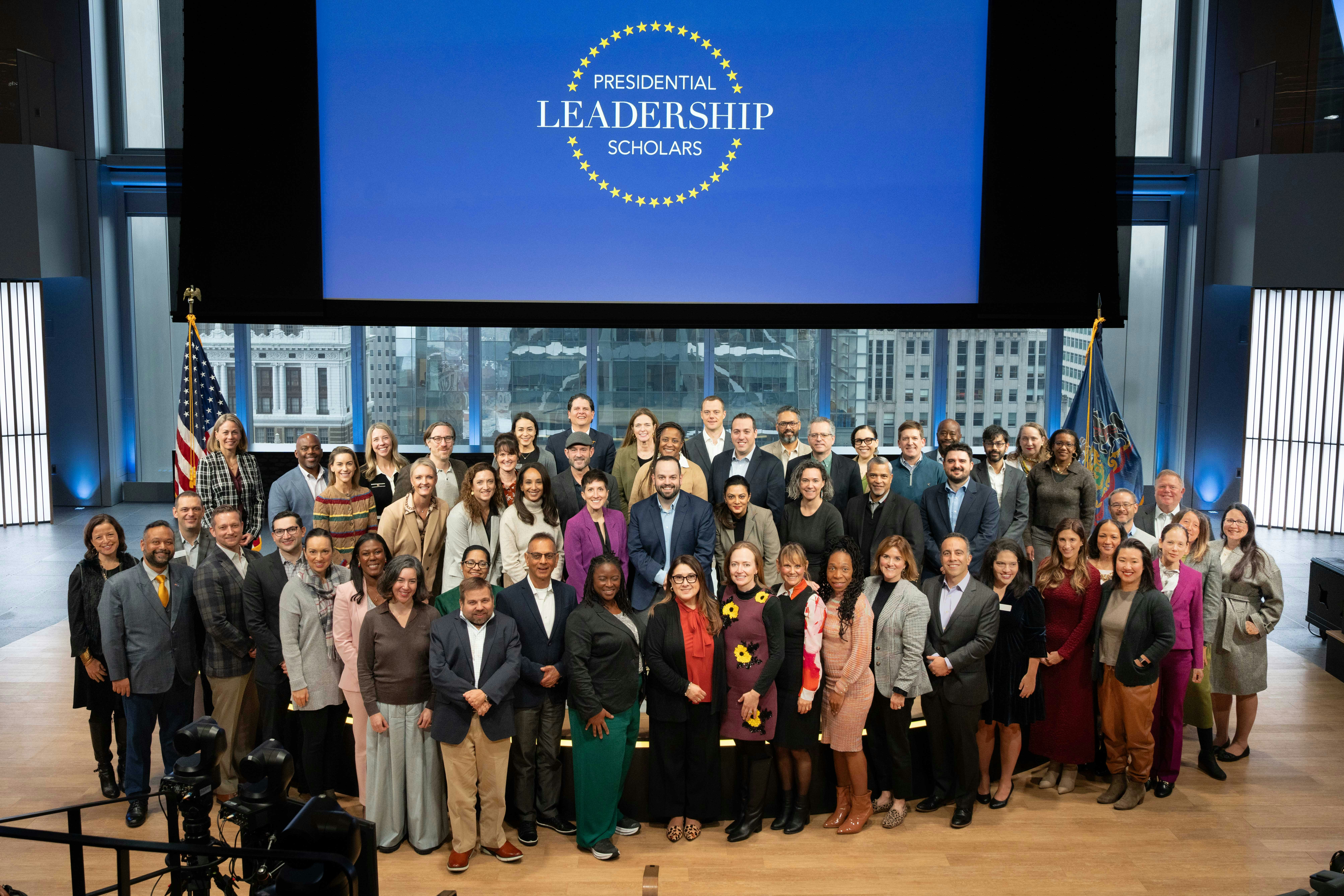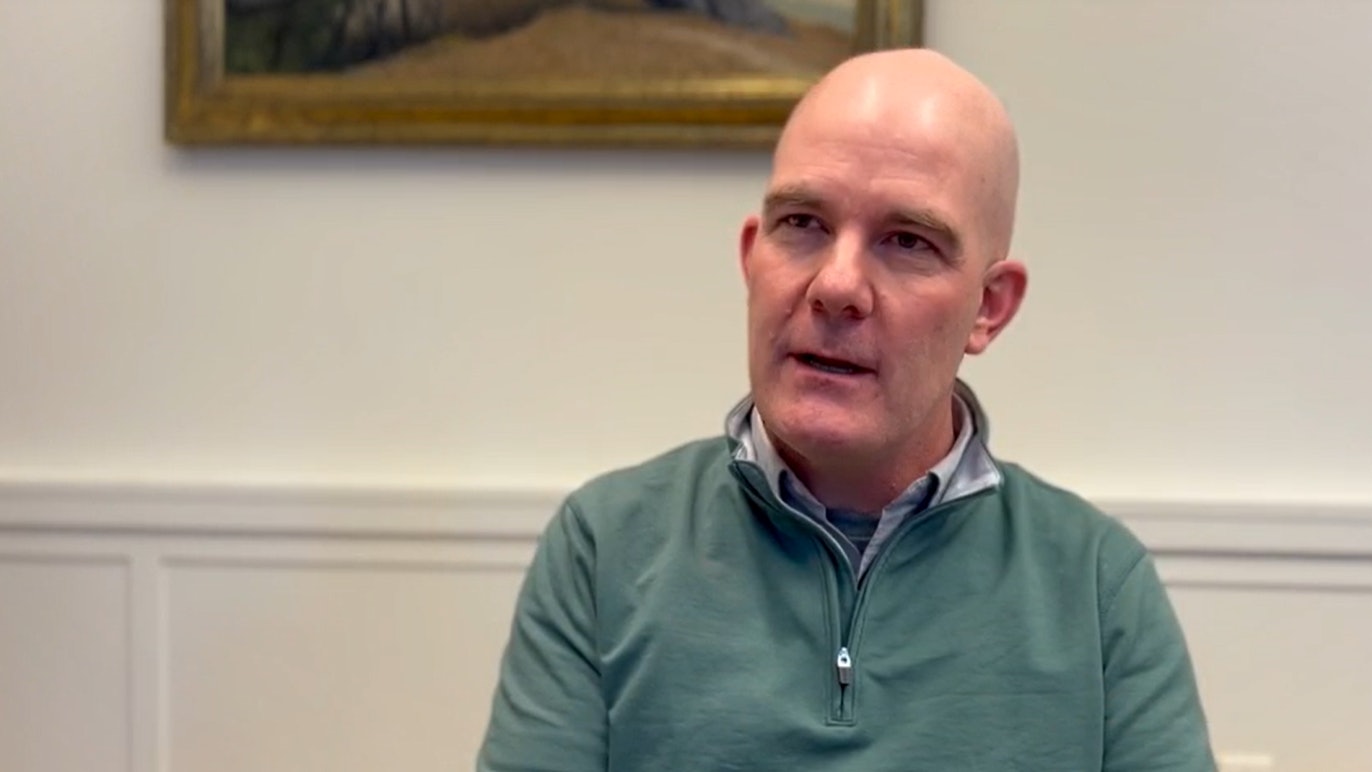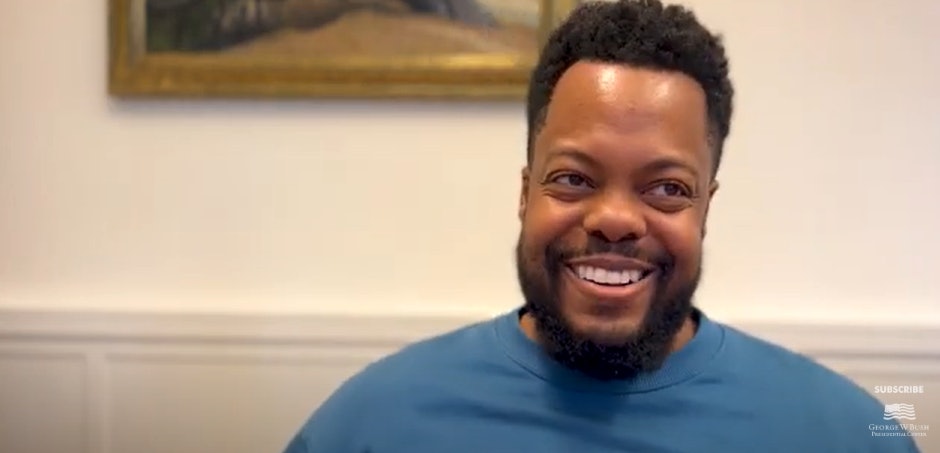Bush Institute Human Freedom Fellow Thomas O. Melia interviews the German Marshall Fund of the United States' Laura Rosenberger and Jamie Fly about how foreign actors are attempting to use social media to undermine democracy here and abroad.
In 2016, American democracy came under unprecedented attack. The Russian Federation attempted to weaken the pillars of our democracy and undermine faith and confidence in our society’s most fundamental right — the ability to choose our own leaders. This interference also seeks to target existing vulnerabilities in our society, playing up divisions, and magnifying conflicts by using our greatest strength – our openness – to undermine faith in America’s democracy.
The Alliance for Securing Democracy, a bipartisan initiative at the German Marshall Fund of the United States, has emerged as a widely-noted effort to respond to this assault. The Alliance’s most visible activity is the Hamilton 68 on-line dashboard. (The Hamilton 68 moniker comes from The Federalist Papers No. 68, in which Alexander Hamilton warns about the dangers of foreign influence in American affairs.) The dashboard presents near real-time metrics about narratives on Twitter that are being launched by accounts tied to Russian disinformation efforts. The tool already has become a standard reference for journalists, researchers, and policymakers.
The Alliance is co-directed by Laura Rosenberger, a career civil servant who served on the National Security Council under President Barack Obama and was foreign policy advisor to former Secretary of State Hillary Clinton during her presidential campaign, and Jamie Fly, who served under President George W. Bush and was senior foreign policy advisor to Senator Marco Rubio (R-Fla), including during his 2016 presidential bid. They recently sat for an interview in Washington with Thomas O. Melia, a George W. Bush Institute Human Freedom Fellow.
Why is it important that this be a bipartisan project? Or is this a nonpartisan project that just happens to have the two of you working together?
Fly: As we see from Russia’s interference in the 2016 presidential election, which targeted candidates in both political parties, and its ongoing disinformation efforts which have attacked Democrats as well as Republicans, Russia’s efforts are not partisan. Rather, its objective is to amplify divisions and sow chaos in order to weaken our society and our democracy.
Putin has continued this pattern of using weaponized information to inflame issues on both sides of the left-right divide, which we are able to track with our Hamilton 68 dashboard. For example, the Russia-liked accounts we track used hashtags that promoted both sides of the #TakeAKnee debate, attempting to further inflame the controversy. They have deployed similar tactics in political debates about gun control and in the wake of Charlottesville.
“…the Russia-liked accounts we track used hashtags that promoted both sides of the #TakeAKnee debate, attempting to further inflame the controversy. They have deployed similar tactics in political debates about gun control and in the wake of Charlottesville.”
–Jamie Fly
Rosenberger: As Jamie described, Russia’s ongoing activities are aimed at dividing and weakening us. This is a direct assault on our society and democracy, and represents a national security threat that should transcend political affiliations and unite officials on both sides of the aisle and throughout the national security community. Jamie and I recently authored a piece in Foreign Affairs in which we discuss how the idea of turning civilian airplanes into weapons was inconceivable before September 11, 2001. Similarly, before the 2016 presidential election, it was inconceivable that foreign actors could weaponize our social media platforms.
The difference we find today is that we don’t have the thoughtful, bipartisan response to this attack that we did after 9/11. We are still mired in debates about what happened rather than addressing our vulnerabilities in a bipartisan manner.
In addition to uniting across party lines, we also believe that democracies need to stand together against this threat. That’s why our initiative is transatlantic – the Russian government uses similar tactics throughout the transatlantic community, often testing along its periphery tactics it exports farther afield. This type of activity requires a coordinated transatlantic response.
“Jamie and I recently authored a piece in Foreign Affairs in which we discuss how before September 11, 2001 the idea of turning civilian airplanes into weapons was inconceivable. Similarly, before the 2016 presidential election, it was inconceivable that foreign actors could weaponize our social media platforms. The difference we find today is that we don’t have the thoughtful, bipartisan response to this attack that we did after 9/11.”
–Laura Rosenberger
Tell us how you chose 600 Twitter accounts to track. It sounds like the Dow Jones Average of stock prices — representative of a broader phenomenon and an indicator of the overall health of Twitter-sphere. Do you also rotate some of the accounts out and bring others in from time-to-time, to keep up with the evolution of the marketplace?
Rosenberger: The approximately 600 accounts are a sample of a much wider network of pro-Kremlin accounts, but they should not be viewed as a representative sample of Twitter or even a representative sample of Russian activity on Twitter. These accounts should be viewed as a sample of distinct networks of Russian-linked accounts that were identified over the course of roughly three years of analysis. They are very likely only the tip of the iceberg.
We used three criteria to select accounts. First, the team we work with analyzed the social networks of users who promoted disinformation campaigns that synchronized with overt Russian propaganda outlets like Sputnik and RT (Russia Today). That team identified which users were centrally involved, and removed users who tweeted disinformation casually, after encountering it online.
They then identified a group of users online who openly professed to be pro-Russian and tweeted primarily in support of Russian government policies and themes. They analyzed followers of these accounts to identify a large and interconnected social network that tweeted the same themes and content.
Finally, our analysts identified accounts that appear to use automation (bots) to boost the signal of other accounts linked to Russian influence operations, or to be the beneficiaries of each of the above activity.
Thousands of accounts could have been selected using the above criteria. Our team chose 600 because it would be large enough to reduce the noise from a few hyperactive accounts and small enough that it wouldn’t overwhelm our servers.
Our analysts occasionally repopulate our list since some accounts go dark (either because of actions taken by Twitter or because they are closed by the user). And some accounts change their messaging habits (this is particularly true of some bots).
Why focus on Twitter and not other social media platforms? Will you be examining the way that Facebook and others may also have also been manipulated in the course of this Russian campaign?
Fly: The reason we focus on Twitter is simple: data on Twitter is publicly available and therefore it is the easiest platform to study. The abuse on other platforms is likely just as if not more prevalent than on Twitter. But other platforms, including Facebook, make it very difficult for researchers to access the necessary data.
We are documenting the full range of platforms that have been utilized by the Russians and other foreign actors. We have also outlined a number of actions that all social media companies can take to make it more difficult for their platforms to be abused. The foreign interference challenge is so broad that it requires a whole of society response and the private sector has an important responsibility as part of that.
The two of you wrote recently in Foreign Affairs that “both the government and the tech platforms hold information and data necessary to fully identify these actors, but neither can do so alone.” You also wrote they don’t really work together very well. Will it take legislation or a national task force to get the companies working with the government to address this effectively?
Rosenberger: We certainly believe proposed legislation, such as the Honest Ads Act, would create similar disclosure requirements for online advertising and is a step in the right direction for print and television. But this legislation doesn’t address the organic content that Russian-backed accounts spread throughout the social media ecosystem using fake user accounts, bots, and trolls.
It’s critical that we close the trust gap between Silicon Valley and the government, which erupted after Edward Snowden’s revelations, to ensure that the public and private sector have the tools and information necessary to detect and defend against these threats. Outside researchers can also play an important role in identifying and enhancing understanding of these threats, and in holding both tech companies and the government accountable.
Fly: The other important piece of this is the fact that the government has access to threat information about foreign tactics and intentions yet they do not control the social media platforms. The companies have proprietary information about how their platforms work. There needs to be a mechanism for these two data streams to be reconciled as part of any effective response to this threat.
Building trust is the first step. Over time, this relationship between government and the private sector needs to be institutionalized much as it has been in other areas such as efforts to eliminate child pornography and violent extremist content from social media platforms.
We know that Russia is spewing propaganda in multiple languages, and I see you have a Hamilton 68 dashboard in the German language — Vladimir Putin’s second language, coincidentally, from his days as a KGB operative in East Germany. How widespread is this problem? Will you have to create more language versions of your alert system?
Fly: If you want to know the breadth of Russian disinformation, look no further than the availability of RT and Sputnik, which claim to reach audiences in over 100 countries and 30 languages. While journalists question whether this reach is accurate, it is clear that the Kremlin’s ambitions are to export its narratives on a global scale. Both RT and Sputnik have racked up an impressive online presence. RT’s main YouTube account has just under 2.5 million subscribers. That is more than BBC, NBC, or Fox News.
“Both RT and Sputnik have racked up an impressive online presence. RT’s main YouTube account has just under 2.5 million subscribers. That is more than BBC, NBC, or Fox News.”
–Jamie Fly
Clearly, the Kremlin cares most about its so-called “near-abroad” neighbors, the term for the now-independent republics of the former Soviet Union. But Russia is a global power and therefore it seeks to influence a wide array of actors. We are engaging partners in other countries who wish to create their own dashboards and also comparing information with organizations that have similar analytical tools in other languages.
It’s essential to have people who understand the local context and who can actively monitor the data displayed by monitoring tools. One of our goals is to elevate the great work done by local organizations and bring it to a wider audience.
Your mission statement says that you are not just a security monitor, but that you plan to tell us the way to secure American democracy from foreign interference. How do we secure our democracy?
Rosenberger: To respond to Russia’s interference, we must reinforce our democratic institutions from within. Russia is successful in part because it preys on preexisting divisions within our societies, so we must address these. We must do the hard work of healing divisions and reducing polarization within the United States, and in democracies across the transatlantic community.
Governments must effectively respond to citizens’ needs. But the other part of this is plugging vulnerabilities that foreign actors can exploit in our electoral, financial, and educational systems.
In the U.S., we are having a conversation about how to secure our voting infrastructure before our midterms later this year. We also need to be discussing what types of laws and regulations we need to put in place to bring greater transparency to our financial system. And we as a country need to address the loopholes that allowed Russia to abuse our social media platforms while still respecting our right to the freedom of speech.
We are developing comprehensive policy recommendations for government, the private sector, and civil society that seek to plug the vulnerabilities that exist within our government and society, and to raise the costs on Russia and other actors for these activities.
Fly: We also must break down the silos that hinder both inter-governmental and intra-governmental responses to this issue. We must share lessons learned and best practices in defending our democracies against this activity. And we must begin to share real-time information about what’s happening on the ground in our societies so that we can anticipate and respond to Russia’s activities.
For example, other countries, such as Sweden, Italy, and Canada, have launched media literacy campaigns in order to improve citizens’ ability to detect and interact with disinformation. We should establish similar media literacy education pilot programs in the United States. And we need to deter Russia and other authoritarian powers from engaging in such activities going forward, including by imposing consequences and raising the costs for such activities.
Simply expelling diplomats is not enough. The continuation and expansion of the transatlantic sanctions regime against Russia is critical to addressing Russia’s interference in Ukraine. The imposition of even greater sanctions against Putin and his inner circle will further increase the costs of continuing to interfere in our democracies.
What about looking at other countries or enemies of democracy who might also be infiltrating American social media, impersonating Americans on-line in order to sow dissension and political chaos? Are we going to have to defend against multiple threats from different directions?
Laura: We believe other actors have already adopted and are innovating Putin’s tactics in a long-term, strategic manner to wield influence. China, in particular, is conducting influence operations in Australia, New Zealand, and Taiwan, where it is refining tactics to deploy in the United States.
As John Garnaut outlined in Foreign Affairs on March 9, China has been laying the groundwork for its influence operations in Australia through what he describes as “a hidden world of inducements, threats, and plausible deniability.” The operations seek to infiltrate the Australian political landscape through a combination of direct donations to political parties and curation of university curriculums.
“We believe other actors have already adopted and are innovating Putin’s tactics in a long-term, strategic manner to wield influence. China, in particular, is conducting influence operations in Australia, New Zealand, and Taiwan, where it is refining tactics to deploy in the United States.”
–Laura Rosenberger
In New Zealand, it is reported that a member of the House of Representative was compromised. And in Taiwan, Chinese espionage has infiltrated the private sector as well as government.
We also see Iran operating in the disinformation space – the BBC recently reported that Iran has been using disinformation to target BBC outlets in the country by setting up fake BBC sites. The U.S. Congress has conducted hearings on the issue of Chinese influence in the United States and is beginning to recognize the strategic nature of the threat; however, much of the attention has been singularly focused on China’s support for Confucius Institutes at academic institutions that promote a pro-China narrative.
While this is an important first step, we need to be prepared to counter and defend against the comprehensive toolkit China and foreign actors employ by plugging all of the vulnerabilities that foreign actors can exploit.






























